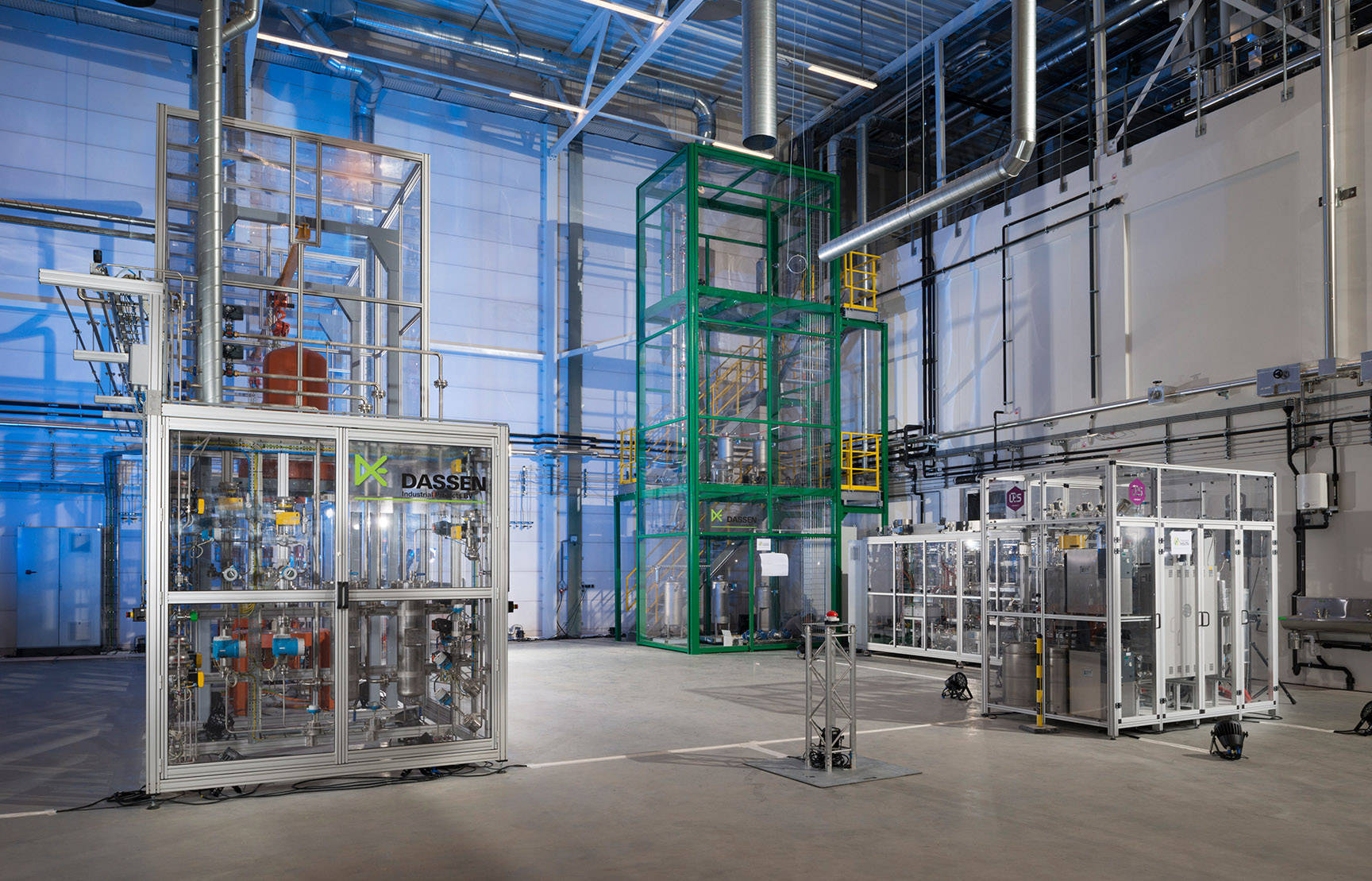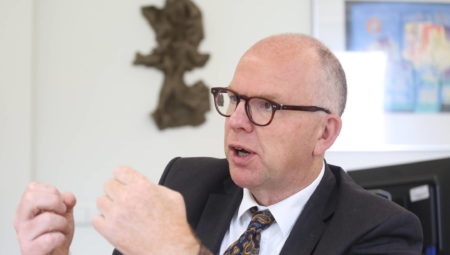Figurehead of the Dutch province of Limburg in the field of Biobased Economy, Meijer plays an active part in the Source B consortium. This platform unites several important parties in Limburg (Brightlands Campus Greenport Venlo, Brightlands Chemelot Campus, Maastricht University and the Province of Limburg) to coordinate biobased projects with each other and facilitate developments. Since April 2017, Meijer has also been the figurehead of the Top Sector Chemistry, which means he is able to promote the interests of the south in The Hague. ‘Developments in the biobased economy are proceeding very fast, on national and international levels. We must link up with that,’ says Meijer. The Source B consortium has a large network, especially in the Euroregion. Maintaining these contacts and making use of them at the right times will translate opportunities more easily into real partnerships.
Industrial threshold
Europe boasts a wealth of knowledge and expertise in biobased, usually organised around the same themes in the biobased economy. But putting biobased products on a large, international market is a high-risk undertaking which requires substantial investment. Granted, there are already companies such as Reverdia and GFBiochemicals which are producing for the market. But it will be some years before we can really speak of a commercial biobased sector, according to Meijer. ‘So we shouldn’t want to go too fast with biobased either. The current developments in this field are only one of the transitions in the entire range of the circular economy, on a European scale as well. It is better for us to start on a small scale and go through all the scaling-up steps. That minimises the risks, for production as well as market. Matters will have to be arranged step by step, and then we can proceed with scaling up to a commercial level.’
Scaling up
‘There are interesting initiatives arising in Limburg,’ says Meijer. For example, an innovation facility for de-centralised biorefining, the BioTreat Center (BTC) will be built in Greenport Venlo. If certain routes are successful, scaling up to larger pilot plants will be possible, if necessary at Chemelot InSciTe at the Brightlands Chemelot Campus. One good example of scaling up is Avantium, which has a pilot plant at the Chemelot Campus. They went through the entire preliminary process of scaling up for the development of biopolymers for bottles and other applications and are now at the stage where this can be established on a large scale. According to Meijer, it is particularly important to link up with partners which have complementary infrastructure, knowledge and expertise. Practical examples of existing international collaborations are Triple F (see box) and AMIBM, a cross-border research institute with major partners Maastricht University, RWTH Aachen University and Fraunhofer IME.
National policy versus European policy
How difficult is it to set up projects in cross-border joint ventures? Meijer: ‘Scientists collaborate in any case, also across borders. But many public initiatives in R&D taken in the Netherlands are determined for the most part by the national policy. Source B is not bound to existing frameworks and can determine itself which developments in the Provinces of Zeeland, North Brabant and Limburg will be stimulated and which European programmes we join.’ Meijer stresses that policy clearly differs between the countries in Europe. Thus Germany invests hugely in knowledge and innovation. In Flanders there is a more specific focus on the approach to biobased research programmes. The Netherlands is somewhere in between the two. According to Meijer, in the Netherlands we work too often with a short-term horizon: ‘The field is relatively young and everyone is still busy finding their way around. In the biobased economy you have to plan for the long term. You are talking quite easily about 10 to 15 years, and that does not happen enough at all in the Netherlands.’
Swing
Another stumbling block is formed by the national laws and regulations. Potentially interesting raw materials are typified as ‘waste’, for example, and because of that they cannot be processed further. One example is residual streams which have been contaminated with agricultural pesticides, whereas there is enough knowledge to clean up these streams and make them fit for use again. ‘We have to work more towards a European legislation which will accelerate biobased product development,’ is Meijer’s opinion. We are slowly seeing a swing from a national to a European policy, according to Meijer. ‘International funding programmes like Horizon 2020 put the focus on social challenges. Previously things were not organised like this in the Top Sector Chemistry and the other top sectors, but that is changing now. ‘The international programmes mean that the European landscape is having some influence on the Dutch policy. Internationalisation, in the areas of cooperation, policy, laws and legislation, does seem to be an essential condition for a transition from a chemical industry to a biobased economy.’



